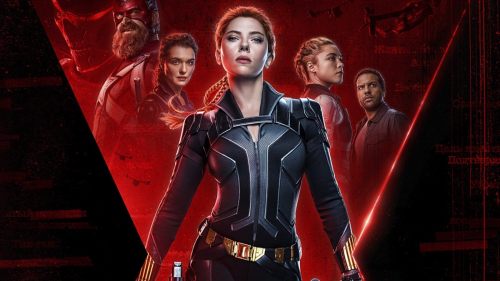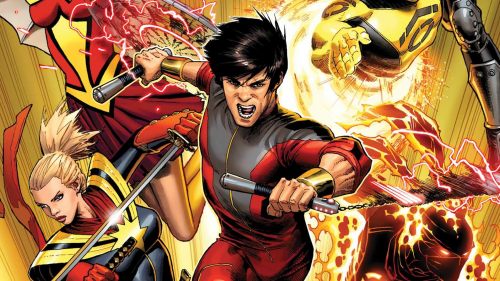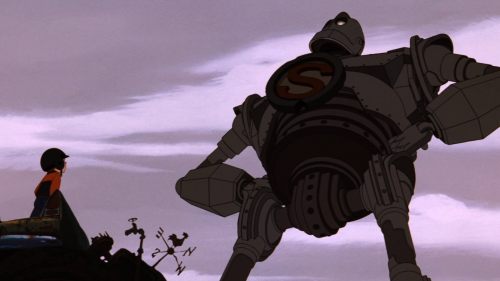James Gunn And The Architects of the MCU
Upon the release of the record-shattering Thor: Ragnarok trailer, many compared its look and feel to Guardians of the Galaxy, and the comparisons were largely favourable. Yesterday, James Gunn announced he’d return for Guardians of the Galaxy Vol. 3, making him the first person to write and direct three movies for Marvel Studios. That seems like a technicality at first, given that writers Chris Markus & Stephen McFeely and directors Joe & Anthony Russo have already surpassed that figure, but between that Thor comparison and the amount of creative freedom Gunn has on these things, one thing is becoming increasingly clear:
James Gunn is one of the architects of the Marvel Cinematic Universe.
It’s a big deal for Marvel to bring him back a third time; the studio is no stranger to directors being… less than happy about the process, but ever since the dissolution of the Marvel Creative Committee in 2015 (and Kevin Feige bringing Marvel Studios under Disney’s Alan Horn and out from under Marvel proper), things have begun to change. Scott Derrickson and his team were allowed to explore spiritual ideas and death anxiety in Doctor Strange, Taika Waititi clearly ran amok with Ragnarok, and Ryan Coogler even brought on his own key creatives for next year’s Black Panther, a film sure to go against what many considered to be an in-house style. This is not the studio it once was.
Up until now, Marvel going with different directors within a series stemmed from wanting or needing a change in tone. For Captain America, it made sense. The character’s World War II-era was a necessary old-world adventure, but the contrast of Cap brushing up against modern shades of grey gave us arguably our best Marvel movie to date, though the same might not be said for his teammates and their film-to-film transitions. Thor: Ragnarok’s Jack Kirby-esque romp stands out because The Dark World was drab and dreary, itself a massive contrast to the first Thor’s tonal nothingness, and the three Iron Man entries feel as far apart from one another as the Captain America films despite their markedly similar settings. An improvement, to be sure – Shane Black did a stellar job despite being handed narrow parameters, something that clearly didn’t go over well during Favreau’s second outing – but these and the various creative changes on the likes of Ant-Man and The Dark World all felt symptomatic of a studio with a fine long-term plan, but a certain hesitance about individual steps, flailing until it could find the right tonal footing.
Joss Whedon was once said to be an over-arching creative voice for the Marvel Cinematic Universe (note: any references to the “MCU” here are only about the movies; Marvel Studios doesn’t make the TV shows and Netflix series), though his creative relationship with Marvel appeared to have soured during Avengers: Age of Ultron. Everyone’s on good terms now, what with Whedon moving on to Batgirl with Feige’s blessing, but between the Russos, Marcus & McFeely and James Gunn, it seems like that issue of appointing key creative consultants is behind them.
There’s nothing to suggest any of these people have an official designation to that effect, but there’s enough to indicate how much of a hand they all have in shaping what we now know as the MCU. Markus & McFeely wrote all three Captain America films in addition to Thor: The Dark World (Marvel’s first explicit step into the realm of Infinity Stones), and they’re the scribes behind both upcoming Avengers installments. Four of the six films I just mentioned have the Russos at the helm, and with Avengers: Infinity War, they’re set to bring the Marvel Cosmic Universe to its Earth-bound counterpart in a major way. While Asgard was our first look at what else is out there, it was James Gunn’s Guardians of the Galaxy that made the biggest splash in terms of expanding what was possible for these movies.
Guardians was a major question mark from the moment it was announced; even die-hard Marvel comics fans hadn’t heard of the team, and there was much skepticism about what this movie would even be until people got a look at the footage. I was at D23 myself in 2013, and that “Hooked on a Feeling” teaser was mindblowing, not just because it looked like nothing we’d ever seen before, but it felt like it, too: a big-budget studio film trading in a B-movie pulp sensibility, and a colourful yet lived-in world that felt like Star Wars on shrooms. And the final product delivered! It wasn’t just a fun, quippy tone alongside some weirdo-bizarre set design, but rather aesthetic AS tone, melding the grandiose with the mundane to give us a world where a Shakespearean-sounding literalist could stand shoulder-to-shoulder with a regular guy and his Walkman, in a grimy mining outpost that also happened to the be the severed head of a God.
It’s this melding of worlds, the Earth-bound naturalism of Iron Man, the MCU’s originator, and the grander, more operatic space setting that allows something like Ragnarok to have its punch (even general audiences have been hooked by that “He’s a friend from work!” line), and while much of it stems from Taika Waititi’s own comedic sensibilities (see also: Thor During Civil War), it fits in perfectly with a gritty junkyard on the outskirts of a galactic coliseum that you’d just as soon use as your screensaver. The designs are Kirby to the fullest, but we probably wouldn’t have seen this sort of audacious combination if Gunn hadn’t first struck tonal gold.
The two distinct worlds of Marvel’s New York and Marvel’s Cosmic Universe will collide next year when the Avengers meet the Guardians of the Galaxy (and Spider-Man!), a story set to continue the year later and one that will no doubt change the face of Marvel once more. While the Russos have been tasked with this culmination, bringing characters with near-mythical sensibilities to their grounded world of spies and politics, it was Gunn that first established the look and feel of Thanos and the Infinity Stones beyond mere hints and cameos, so the fact that these folks all get to communicate internally and lend each other a helping hand definitely inspires confidence.
Guardians of the Galaxy is all about finding beauty in the weird, bringing a team of broken, damaged misfits together to form one of modern pop cultures most beloved found families, so it’s fitting that Gunn has gotten to establish so much of what the future of Marvel will feel like, directly or otherwise. A big, weird world where the likes of Thor and Hulk, previously saviours of American and European cities, can stumbled into and have their own cosmic adventures among the Nine Realms, while Star Lord is off having conversations with his dad who also happens to be Kurt Russell and a giant planet. With more and more Marvel films heading out into the cosmos (Gunn’s own Vols. 2 & 3 and potentially Captain Marvel, not to mention all the dimension weirdness in Doctor Strange and its follow-ups), a larger share of this universe is going to be set in much more “out there” territory.
James Gunn might be done with Marvel after his threequel… or he might not be. Guardians of the Galaxy Vol. 3 could be the last adventure for his iteration of the Guardians, but it could also set up a decade of films for Marvel, and Kevin Feige seems to believe Gunn’s proclivity for bringing this universe to life is something we might see more of as we enter the 2020s. In Feige’s own words:
"I think James in particular has an amazing connection with these characters and with this cosmic world. So he, I think, could easily oversee additional stories beyond Vol. 3, and I think [he] has them and just continues to come up with them, which is cool. All of our core writers and filmmakers know what we are doing in other places and help give input on the various projects."
Guardians of the Galaxy Vol. 2 arrives April 28th/May 5th.



